Matador Network's Blog, page 2179
November 26, 2014
American travelers are thankful for

Photo: uneasylies
Happy Thanksgiving, American travelers! In the spirit of our country’s most gracious and delicious holiday, we’ve put together a list of some of the things American travelers have to be grateful for.
American passports
You can go pretty much anywhere on an American passport. Sure, Cuba and North Korea are tough to get to, and some countries make you pay hefty fees and jump through hoops, but you can still get pretty much anywhere in the world with an American passport. As of last year, you could get to 172 countries on an US passport. Only three countries can beat that (The UK, Finland, and Sweden, all of which have visa-free access to 173 countries).
Travelers in many countries in Africa and Asia have a much harder time getting around the world. Lebanon, Sri Lanka, and the Sudan can only get to 38 countries without a visa, while Iraq and Afghanistan have a dismal 31 and 28 respectively. So the next time you’re sitting in a customs line, annoyed at the wait, just remember: the world is your oyster as an American, and if the accident of where you were born had turned out differently, you could have a lot fewer travel options.
The age of the loud, clueless American traveler is over.
That story you heard about only 10% of Americans having passports? Not true! Nearly a third of American citizens now have passports, which is impressive when you consider how much further most of us have to travel to get to another country compared to, say, Europeans.
And the quality of our travelers is improving. No longer are we considered the most obnoxious tourists (the French, Brits, and Russians have beaten us in various polls), while the number of our students studying abroad is increasing. Our recent college grads are making travel a priority, too. Welcome to the Golden Age of American travel!
21st-century travel options
Ibn Battuta, one of the greatest travelers of all time, traveled from his home in Morocco to China and then back. In the 14th century, this took him 24 years. Now, in the 21st, you could do that trip in a total of about 26 hours, if you spent all your time on a plane. Not that you’d want to.
Battuta’s travels were impressive for any time, but if we wanted to trace his route, we could do it way faster, and we could avoid stuff like the Black Plague and blisters. The globalized world seems to have been made for travelers: this is the first century where, at the start of it, pretty much any place on the face of earth that was above water, had already been discovered, and most of those places you can get to in a matter of days.
The US may not have the best train system in the world, but it does have the best aviation system in the world, and is home to over 15,000 airports. Recent years have also seen an increase in budget airlines. So our travel may not be the most comfortable, but it’s certainly easy and dirt-cheap.
The internet
God, what hasn’t the internet given us? We can thank the internet for cheap flights, travel blogging, democratized deal hunting, forums where you can share tips with other travelers, and the ability to communicate quickly, cheaply, and easily with family and friends on the other side of the world.
And I personally have the internet to thank for my employer. Thanks, internet, for Matador!
The rise of green travel (with WiFi!)
More and more environmentally friendly travel options are becoming available as the world starts to recognize the dangers of unlimited carbon emissions, which is good news for travelers, considering how bad planes are in terms of emissions.
This means more trains and electric cars, hopefully, but the Union of Concerned Scientists reports that the greenest method of travel is motorcoaches like BoltBus and Megabus. They’re super cheap and they offer free WiFi.
Low gas prices
Okay, so low is a relative term, but in comparison to years past, a gallon of gas costing under $3 is an amazing holiday treat. Is it going to last? Certainly not. Are we still spiraling toward climate change and global catastrophe? Sadly, yes. But this holiday season, the poor budget travelers among us will get to make affordable road trips home to our friends and family. And for that much we have a lot to be thankful for.
The de-suckification of amateur travel photography
Sure, not everyone’s producing NatGeo quality work, but with the ubiquity of smartphones and the improvement of digital-camera technology, everyone at least has the option of taking some really incredible pictures and then, thanks to the internet, sharing them with the world. Don’t believe me? Go to Instagram. Go to Pinterest. Go to Flickr. Some of the amateur stuff out there — stuff that’ll never end up in a publication — is pretty amazing.
Amateur photography has seriously risen in terms of quality in the last few years. And that’s not even considering the incredible stuff we’ve been getting from GoPro and drone enthusiasts. Gone are the days of being forced to watch shitty carousel slideshows of people’s trip to Europe: now, you can post the photos online, and anyone who wants to look at them can look at them. 
Special thanks to Matador Community members Paige Ashley Smith, Jennifer Melroy, Katka Lapelosova, and Jill Kozak for helping this curmudgeonly writer come up with more things to be grateful for.

Slang phrases Boston gave the USA

Photo: nerdcoregirl
1. Wicked pissa
As in: “Ya new cah’s wicked pissa!”
Even though it sounds like your friend is insulting you, this is the height of compliments in Boston. It means your car is awesome.
2. Skeezah, tool, igit
Bostonians have created a myriad of insulting words for their friends. These ones roughly mean drug addict, asshole, and idiot.
3. Bang
Another casually aggressive Boston term, it means ‘to turn’. As in: “Bang a U-ie up heah, and use ya blinkah!”
4. Pahlah
Refers to the parlor, or living room, of the house. This is where the family typically gathers for social activity.
5. Down the Cape
This refers to Cape Cod, the most popular place to hang out in the summer. You cannot go “up the Cape” because it doesn’t exist.
6. Dunkies
As in Dunkin’ Donuts, the best coffee around. I’ll take a lahge regulah.
7. Spa
A pizza, sandwich, and convenience store all rolled into one. A true Bostonian might suggest that you “get suppah at Town Spa.”
8. Badadoes
No, your friend didn’t just have a stroke. Badadoes means “potatoes” in Boston speak.
9. No suh!
An expression of complete disbelief. The correct response is always “Yes suh!”
10. So don’t I!
Another semi-nonsensical phrase, this one means “me too.”
11. Rippah
Kegger, huge party. Something you don’t want to miss.
12. The Hub (never Beantown)
This description of Boston — “The hub of the solar system” — was coined by Oliver Wendell Holmes in the 19th century. With characteristic flair, Bostonians quickly modified this to “The hub of the universe.” I don’t think anyone knows where “Beantown” came from, but we’re not into it. 

What baristas think of your order

Photo: Jesús Gorriti
You say you’re just there for the caffeine buzz, but we all know that your coffee order is the dark window to your soul. Here’s what baristas really think of your drink.
“Skinny” lattes — You live in your yoga pants, and spend way too much time on Pinterest.
Frappuccino before 8am — You’re probably on your way to your first grown-up job, wearing real shoes and pants with no spandex. Good job upgrading to adult so far. Now it’s time to switch to a respectable morning beverage.
Something off the “secret menu” — You are a 14-year-old girl with an iPhone 6 and Tory Burch shoes. Did Snapchat put you up to this?
Eggnog latte — You are a hot mess. You’re going to be the most-wasted at your company’s Christmas party.
Nonfat eggnog latte – You know this is like ordering a Super Sized Big Mac combo meal with a Diet Coke, right?
Cappuccino — You studied abroad in Italy, but didn’t actually learn anything from your experience.

More like this What bartenders actually think of your drink order
Black tea — You probably studied abroad in the UK and/or have a giant crush on Benedict Cumberbatch.
Green tea frappuccino — You studied abroad in Japan, and eat sushi and watch anime porn (probably).
Soy latte — You’re super earthy, and probably a vegan. Bonus points if you brought your own cup and ask for grounds for your garden.
Latte, no foam — You’re high maintenance. You will definitely send this back at least once.
Dark roast, black — That’s sexy.
Americano — *in Ron Burgundy voice* “Hey everyone! Look how sophisticated I am!”
Shot of espresso — You’re easygoing, low maintenance. Unless you knock that shit back like a shot. You were super pissed when the original Four Loko was taken off the market.
Green tea with honey — You can afford to buy all of your clothes from ModCloth, so why the fuck did you order the cheapest thing on the menu? Probably because you buy all of your clothes from ModCloth.
Espresso con panna — Are you a barista? Nobody actually orders this.
Latte with sugar-free syrup and soy milk — You think this is healthy. It is not.
Iced coffee, black — You’re super chill.
Redeye (coffee with one shot of espresso) — You had a rough night last night.
Blackeye (coffee with two shots of espresso) — You have a problem.
Two shots of espresso in a large cup of ice — You think you’re so clever, but I’m on to you. Asshole.
Smoothie — You just ran eight miles. I’d be more impressed if I wasn’t dying inside from the nasty, sweaty $5 bill you just paid with.
Mocha – You didn’t know what else to order (even though you looked at the menu for like 10 minutes while at the register, holding up the line).
Chai latte — You are on your way to yoga. At 6:30 in the morning.
Caramel frappuccino with extra whip and extra drizzle — You make poor life choices.
Pumpkin spice latte, in August — Please, tell me more about how excited you are for sweater weather.
Soy eggnog latte — Oh gawwwd. You are going to act really defensive when I tell you that the eggnog has dairy in it.
Other seasonal latte — You are most definitely going to Instagram this. I am going to spell your name wrong on purpose. #sorrynotsorry
Espresso macchiato — You are either super cool, or really annoying. There’s really no in-between.
Triple grande half-caf two-pump vanilla two-pump hazelnut half-soy half-nonfat 1.5 splenda latte — Let me guess, they always get it right at the OTHER coffee shop, don’t they? 

How to understand Mexican women

Photo: Rulo Luna Ramos
1. They are always in the middle of some strange ritual.
Tradition is stronger than anything and it has helped us preserve some interesting habits. People say they don’t really believe in this stuff, but keep doing it anyway.
Examples? Pregnant women wear a little red ribbon or a safety pin attached to their underwear whenever there’s a lunar eclipse to defend their unborn child from astronomical maleficence. Women also tend to have an overstock on red and yellow panties that reflect their wishes for true love or money for the New Year (depending on the current necessity). And there are some others who buy an image or figurine of Saint Anthony of Padua, put him on an altar with some candles, and place it upside down until the day the miracle happens and they find true love. Yep, that’s actually extorting a saint!
2. They all have this peculiar relationship with their moms.
The psychological scars as a result of being raised by Mexican mothers are surely inside everyone of us, but that doesn’t mean we cannot have a functional relationship with them as grown ups. As a matter of fact, Mexican men and women develop a strong attachment to their mothers and families, but the relationship is quite different for sons and daughters.
The relationship between mother and daughter transitions between absolute love and absolute hate with relative ease. The closer they are, the stronger these transitions become and it’s quite common to misinterpret the complexity of their bond based on a discreet observation. Think about them as best friends who occasionally have little misunderstandings…scary and dramatic misunderstandings.
3. They have some serious makeup skills.
There’s not a single pattern regarding the amount of makeup Mexican girls wear. Something between discrete and moderate suits most, but downright clownish style is a common sight during morning commutes.
What these women do share in common are their advanced skills in everything makeup. From the masterful use of a teaspoon for eyelash curling to the amazing ability to draw a perfect eyeliner line during a bumpy bus ride, Mexican women know makeup.
I’d also like to recognise the patience of those women who transform each of their fingernails into tiny masterpieces, even if most of the time they end up looking like miniature wedding cakes.
4. They’re really knowledgeable about healthy living.
And I’m not referring to that issue we Mexicans have with self-prescription. Mexican women are the best when it comes to home remedies: honey lemon tea or mullein for a cold, chamomile to ease up stomach pain and help you sleep, valerian to calm your nerves, and some aloe for anything else. Nothing withstands the power of teas and herbal infusions.
They are also familiar with every possible kind of weight-reduction plan. The moon diet, the grapefruit diet, the apple diet, the just-a-random-amount-of-time diet — you name it, they’ve probably tried it.
5. They’re quite passionate…and that’s a double-edged sword.
Under normal circumstances they tend to be the most loving, caring, and affectionate women in the whole world. Anyone who has or has had a Mexican girlfriend knows that their displays of affection can be stifling, which is actually good. C’mon, who doesn’t like to be asphyxiated by love and affection? Mexican girls have every attribute anyone would want…until they get mad at you, of course.
Passion is just another way of saying quick tempered. Sooner or later you’ll discover there’s a dark side that lurks behind those pretty eyes.
6. They know how to party and they party hard.
If Mexican women could be defined in one word, that word would be cheerful. They are friendly, outgoing, loud, and always in the mood for some good fun. Girls in Mexico will dance the night away given the opportunity and opportunities abound!
7. You know what they say about Mexicans always being late?
I’ll not blame Mexican women for the entirety of these stereotype, but they do share a big part of the guilt with some of their habits. For instance, there is a big difference for them between being ready to go out and actually being capable of doing so. When a Mexican girl tells you she’s all set, she’s only acknowledging your patience. If she hasn’t decided which shoes she’s wearing or hasn’t picked up her ever-faithful handbag, she’s far from ready.
8. Neither delicate nor frail are words that suit them.
Mexican women have been historically recognized for their strong temperament and rebelliousness. Living in a society with strong gender problems has influenced the character of Mexican women; they’re assertive and never afraid to express themselves freely, and those are two reasons why you don’t want a Mexican girl as an enemy. 

10 signs you're a backpacker newbie

Photo: Daniel Foster
1. You packed so much you can barely get your bag onto your back.
The first week you feel so proud of yourself for miraculously managing to fit 90% of your house into your bag, and you feel bad for those deprived backpackers carrying just a few belongings in small backpacks.
That’s cute. Week two? You’ll be cursing every time you have to look at your stupid bag once you realize that: a) you’ll end up wearing the same t-shirt every day, so why the hell you thought you needed to pack 16 shirts is beyond even you at this point, b) you don’t have a centimeter of room in which to fit a snack or a single tiny souvenir, and c) you struggle, embarrassed, for five minutes every time you try to lift your bag onto your back before you finally give up and need to ask a friend, doorman, bus attendant, taxi driver, or total stranger for help hoisting the beast up onto you.
(Meanwhile, please know that those ‘deprived’ travelers with small backpacks and few belongings are standing by, smirking, and getting great amusement out of the show…)
2. Your itinerary is jam-packed.
Trying to see 13 countries during a one-month trip is going to leave your head spinning. Being overly ambitious about how much ground you can cover on your first trip is a common mistake. If you move from place to place every day or two, it will feel as though all of your time is spent in transit, and all the places you see will most likely blur together.
Think quality of experience instead of quantity. You’re traveling to see new places, ideas, and cultures…not to check off to-do lists and anxiously collect as many passport stamps as possible so you can feel cool.
3. You get really angry when things go wrong.
Things will go wrong. Count on it. The ‘VIP’ bus you bought tickets for in Peru ends up being a gutted minivan with no brakes, and you end up sitting next to a smelly man carrying a baby llama. The Laotian road is closed for some unknown reason and no one has a clue when it will re-open. Maybe tomorrow, maybe next week. Your wallet gets stolen in Paris and you have no way to pay for your hostel or your next meal. You get your heart broken when the hot Brazilian’s spouse (who you didn’t know existed) walks in. You get malaria in Mozambique.
Good for you. You now have travel stories. Who the hell wants to hear about the time you went on a trip and everything went flawlessly? You know you’ll laugh about these things later. Do yourself and everyone around you a favor — get a head start and start laughing now. And don’t be an ungrateful bastard — remember, no matter what happens, to be thankful that you’re traveling and not somewhere in some soul-sucking cubicle job you hate.
4. You didn’t bother buying travel insurance.
Please refer back to point #3. Count on things going wrong. It’s all fun and games when it just means you miss a bus or something. But when you end up with broken bones on the side of the road and the ambulance won’t pick you up until you can prove that you can pay the huge hospital bill (which, let’s face it, you can’t), you’ll wish you had travel insurance. Just saying.
5. You put a lot of effort into chasing the ‘best’ season.
Experienced backpackers travel off peak season, knowing they’ll have a better choice of available accommodation, lower prices, more haggling power (meaning you can travel for longer on the little money you probably have), and fewer crowds to deal with.
6. You packed for hardcore wilderness travel but are backpacking through cosmopolitan Europe.
Once you decide you’re going backpacking, it’s easy to get caught up in the excitement of it all. You’ll wander around outdoor shops eyeing expensive, massive first aid and sewing kits, down sleeping bags that cost more than your monthly rent at home, water purifiers, and loads of things that will most likely never, ever leave the deepest, darkest corners of your backpack.
Let’s get real…we all know your ass is more likely going to end up in a hostel or crashed on someone’s couch, that you’ll buy bottled water when you’re thirsty, and that owning a sewing kit does not magically mean you’ll know how to sew if something rips. Save your money and splurge on a nice hotel one night on the road — trust me, there will come a moment on the road when you consider a real bed and hot water as the only ‘survival’ necessity you need.
7. You find yourself stuck without money.
And not just because you’re poor and didn’t budget well. Experienced backpackers know that wallets get stolen. ATM machines eat debit cards. Traveler’s checks are not accepted in a lot of places — nor are credit cards, for that matter, once you get off the well-beaten tourist track. Have a backup source of money. And a backup to your backup.
8. You spend all of your time stuck like glue to other backpackers.
Chatting with other backpackers on the road is fun, and you can meet some great people. Sometimes just being able to effortlessly speak with someone in a common language is refreshing. But many experienced backpackers know the worth of having real conversations and interactions with local people. If you wanted to hang out with a bunch of people that look like you and talk like you, you should have saved yourself a lot of money and effort and just stayed home. Learn. Connect. Grow. One of the best ways to do that on the road is to get out of your comfort zone and interact with locals.
9. You majorly screwed up when budgeting.
When backpacking, there are more things you’ll spend money on than just accommodation and food. You thought you were smart and set up Couchsurfing throughout the trip — that’s great. What happens when you get into town and receive a message that something came up and you can’t be hosted that night? Or when you whip out the map and find that your ‘free’ place to crash can only be reached by a $50 cab ride?
If you lose your passport, do you have money to transport yourself to the nearest embassy? Did you budget for internet use in places that don’t have Wi-Fi? Do you have money for the things that you didn’t think would add up, but surprisingly do, such as buying bottled water every day? How about spare cash for possible extra baggage fees on your flight back? For visa fees? How about ATM surcharges, which in some countries are astonishingly high? Some of these things might seem nominal, but for the backpacker on a super tight budget, it could mean running out of money before the trip is done.
10. You’re adamant about sticking to your planned route / activities.
After months of preparation and route mapping, you formulated a travel plan, and dammit, you’re going to stick to it…even if that means you’ll miss out on other, better, spontaneous plans.
Experienced backpackers tune into the opportunities of the road and take full advantage — staying an extra weekend to go experience the wedding of the cousin of the person they met at the bar? Hell yeah, when else are they going to get invited to a traditional Mongolian wedding? Many of the most memorable travel moments are the ones that you could never in a million years have planned ahead of time — in time, you’ll learn to embrace them enthusiastically when they come up. 

6 prisons on 6 continents

Visitor on Alcatraz. Via
JAILS MAY NOT be the most obvious tourist spots. Here are six worth visiting on six different continents (if someone knows of one in Antarctica, please share).
1. Port Arthur (Australia)

The baddest of the bad. Where the convicts sent their convicts and then committed unspeakable horrors on them. It is perhaps one of Britain’s darkest historical chapters. The prison closed in 1877.
Now a large site and considered one of the most haunted places on earth, you can tour this prison by day or night and learn how the prisoners were treated and the conditions in which they were kept. You may even meet one during your stay.
2. Alcatraz (USA, North America)

Arguably the most famous prison in the world, thanks to popular movies that bear its name. Alcatraz was considered impossible to escape from, and the sight of San Francisco so close must have only added to the frustration of isolation.
Tours of the prison can now be taken by day or night, and you will often be escorted by an ex-con. Al Capone’s cell is one of the popular spots on the tour, although my favorite memory from my visit was our guide’s eyewitness recollection of a fatal stabbing in the kitchens.
3. Robben Island (South Africa, Africa)

This notorious prison off the coast of Cape Town is now a shrine to Nelson Mandela, and visits to the prison tell the story of how he and the many others kept here lived, ate, and suffered throughout their time on the island.
Again, tours are guided by former inmates, and it would be a rare case to come across one who was not asked if he knew Mandela personally.
Look out for the penguins that have made their home here and can often be seen hiding in the cells.
4. Ushuaia Prison (Argentina, South America)

This must be the southernmost prison in the world. Established as a penal colony in the early 20th century, Argentina’s baddies were sent down to the Southern Patagonian city of Ushuaia, where they resettled. They spent their time here building roads, constructing buildings and railways, and making a new life for themselves.
Now a museum, this prison actually includes an exhibit on the world’s prison museums. (Yes, you read that right.)
5. Bukhara Zindan (Uzbekistan, Asia)

Photo by the Author
This is the place where the Emir of Bukhara would keep his prisoners before deciding when to throw them from the tower to their deaths. In its center is the Bug Pit, where prisoners would be covered in vermin and insects for long periods.
Once a site of terror, the gaol is now a humble museum and includes the tacky and rather disturbing figures of Stoddart and Connolly, the British officers who were executed by the Emir in 1842.
6. The Tower of London (UK, Europe)

Maybe the most famous building of all, yet the least obvious prison. It is more well known today for housing the Crown Jewels, but in its heyday the Tower was the home of many famous guests, including Walter Raleigh, Guy Fawkes, and the English prince, Edward V.
It is one of London’s most visited attractions, and walking through the Tower it is easy to forget its bloody past. 
Editor’s note: This post first appeared at 501Places titled Go directly to Jail – do not collect £200 (in fact you need to pay to come in). First published on Matador on June 25, 2010.

14 of Europe's scenic rail routes

Photo: faungg’s photo

Photo: François Philipp
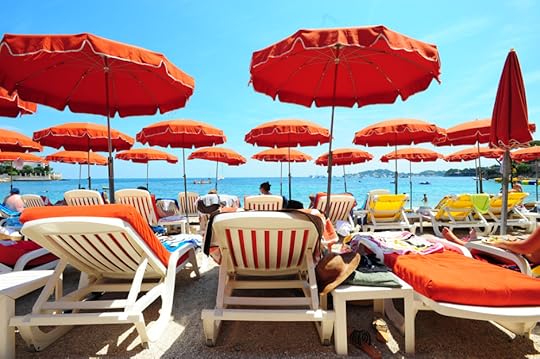
Photo: Stephen Bartels
Route: Paris to Nice
Highlights: Clay-tile-roofed villages, tidy vineyards, epic blue water
Beta: Departures daily, year-round. Eurail passes accepted.
This ride is all about that famous South-of-France color and light — from purple lavender fields to Côte d’Azur blue and the way in which the golden sunlight magically bathes it all. Starting in Paris, you’re in the sunflower and lavender fields of Provence just two hours later. Then, before you’ve even had the chance to comprehend Provence, you’re on the French Riviera, a dreamy coastline of dramatic beaches, picturesque villages, and brown beach bodies.
2. Arlberg Line, Austria
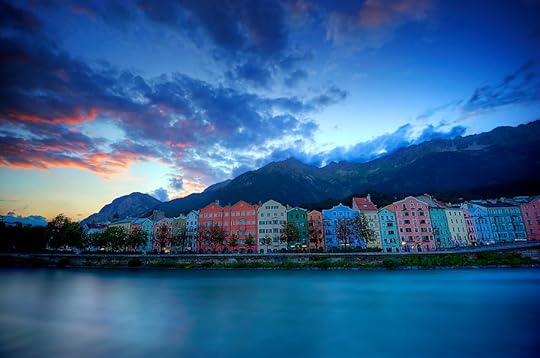
Photo: Alex Hanoko

Photo: Gitte Herden

Photo: Omad
Route: Innsbruck to Landeck to Bludenz
Highlights: 286ft-tall Trisanna Bridge, Castle Weisberg, 6.4-mile Albergtunnel, postcard Tyrol towns
Beta: Trains run daily year-round. No reservations required. Austrian Eurail passes accepted.
The transalpine Arlberg Railway is Austria’s only east-west mountain line and has been a marvel of engineering since its completion in 1884 — a year ahead of schedule, incidentally. The route traverses Austria’s western “finger” of mountainous land and features countless bridges, tunnels, and viaducts. With steep grades in high-alpine environments, it’s a problematic line for railway engineers and maintenance workers, but pure delight for riders.
3. Semmering Line, Austria

Photo: Michael Hanisch

Photo: Thomas Waldeck

Photo: Michael Hanisch
Route: Wiener Neustadt to Bruck an der Mur
Highlights: Over 100 curved stone bridges, the 4,700ft-long Vertex Tunnel, 16 viaducts (many of which are two story)
Beta: No reservations required. Austrian Eurail passes accepted.
One of the first great alpine railways — instrumental in proving high-elevation train travel on standard-gauge track was indeed possible — the Semmering Line opened in 1854 and was the highest line in the world at the time. Not just the highest, it was also built to be the most beautiful, with special attention paid to harmonizing the railroad with the natural surroundings it passes through. The Semmering, a UNESCO World Heritage Site, is truly an exceptional train ride.
4. Black Forest Line, Germany

Photo: Jim D. Woodward

Photo: Carsten Franzl
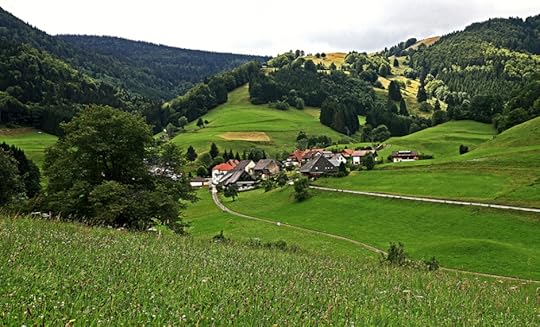
Photo: Peter Rintel
Route: Offenburg to Konstanz and Freiburg to Seebrugg
Highlights: The Lakes of Titisee and Schluchsee, “Hell Valley,” traditional farms and half-timbered villages, the stretch from Hornberg to St. Georgen
Beta: Standard trains depart daily. Check schedule for special “nostalgia” trains running vintage locomotives. Eurail passes accepted.
The Black Forest is the stuff of fairy tales, quite literally — Germany’s ancient forest was the setting and inspiration for the twisted fantasies of the Brothers Grimm. Germany has done an admirable job protecting the forest and the pastoral lifestyle that defines this southwestern region. And exploring this revered woodland gets no better than on the Deutsche Bahn’s Black Forest Line.
5. Rhine Valley Line, Germany

Photo: David Wilson

Photo: faungg

Photo: faungg
Route: Koblenz to Mainz
Highlights: Rhine wine — Riesling is king but also try Müller-Thurgau and Gewürztraminer. Impossibly cute towns of Bacharach, St. Goar, Rüdesheim.
Beta: Multiple departures per day. No reservations necessary. Eurail passes accepted.
This riverside tour connects some of Germany’s quaintest Rhine villages, where vineyards sit on terraced hillsides below looming medieval castles. There may be more charm packed into this 100km stretch than anywhere else in Germany. Take your time and catch a “milk-run” train that stops at all the villages along the way. The coolest part? Hopping from train to boat or vice versa using the same ticket!
6. Eurocity, Germany / Austria / Italy

Photo: David Gubler

Photo: Patrick Gullo

Photo: abzgtphotography
Route: Munich to Verona to Bologna or Venice
Highlights: Breakfast in Munich and dinner in Venice
Beta: Multiple departures daily. Eurail pass holders pay €11 supplemental fee.
Huge windows help bring the Alps inside the train on this mountainous, three-country route. This line slices through some of the most beautiful mountains, rivers, and alpine villages in Austria, Germany, and Italy. It’s a never-ending bombardment of steep cliff faces, green pastures, and roaring rivers. Usually on routes over six hours I opt for the night train, but not here. The scenery is simply not to be missed.
7. Bernina Express, Switzerland

Photo: Germán Saavedra Rojas

Photo: Emanuele

Photo: Hans-Rudolf Stoll
Route: Chur or St. Moritz to Tirano
Highlights: Viaducts spanning huge drops, tunnels galore
Beta: Multiple departures daily. Eurail pass holders pay €10-14 supplemental fee.
The Bernina Express is the James Bond of scenic trains — smoothly pulling off impossible daredevil feats and looking damn good in the process. Extra-large panorama windows offer an incredible vantage point from which to take in the glaciers, lakes, peaks, and villages of Switzerland’s High Alps.
8. Centovalli Railway, Switzerland and Italy

Photo: Vasile Cotovanu

Photo: Selden Vestrit
Route: Domodossola to Locarno
Highlights: Stone cottages, waterfalls, hardwood forests, idyllic vineyards
Beta: Departures daily year-round. Eurail passes accepted.
Centovalli means “100 Valleys,” so you can probably guess what this Italy-to-Switzerland alpine route is famous for. It ain’t beaches. This is the way to travel from French-speaking Switzerland to the Germanic capital, Bern.
9. The Flam Railway, Norway
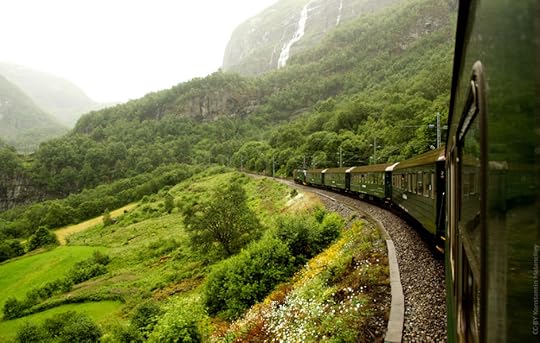
Photo: Konstantin Malanchev
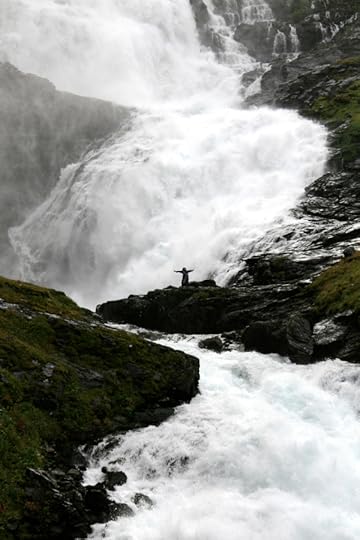
Photo: Jenni Douglas

Photo: Karen Blumberg
Route: Myrdal to Flam
Highlights: The Nåli Tunnel, tremendous fjord views, Kjosfossen waterfall
Beta: Multiple departures daily. No reservation necessary. Eurail pass holders receive a 30% discount.
It’s hard to believe this steep, picturesque line was ever a working railway, but indeed it was, shuffling passengers and cargo into the Sognefjord beginning in 1940. Nowadays, it operates purely for the pleasure of gawking tourists, traveling slowly and making ample scenic stops. After the roughly one-hour journey, continue on to Oslo or Bergen by train.
10. The Rauma Railway, Norway

Photo: Alexander Lindeskär

Photo: Simo Räsänen

Photo: color line
Route: Dombås to Åndalsnes
Highlights: The emerald-green River Rauma, access to hiking trails like the Trolls’ Path, stunning fjord views, Kylling Bridge, Trollveggen
Beta: Multiple departures daily. Sightseeing train runs end of May through end of August — reservations strongly recommended. Normal trains run year-round. Eurail passes accepted.
Norway’s “other” tourist train draws fewer visitors than the Flam Railway, but packs just as big of a scenic punch. Starting at sea level, the majestic fjordlands quickly give way to lush alpine meadows, deep gorges, and vertical cliff faces. Be sure to pack a sack lunch and wear hiking shoes, because the train stops at several destination hiking trails.
11. Inlandsbanan, Sweden

Photo: Jonas Haller

Photo: alinnman

Photo: tobin
Route: Kristinehamn to Gällivare
Highlights: Oh, I don’t know, maybe the Arctic FRIGGIN’ Circle!
Beta: Departures daily beginning of June to end of August and December to April. Eurail passes are valid with a 30SEK reservation fee; reservations are required.
The 14-hour, 1,300km Inlandsbanan (“Inland Line”) traverses some of the wildest terrain in Scandinavia as it races past the Arctic Circle. Not many people (except for perhaps Santa Claus, though he has alternative forms of transportation) get to say they rode a train to the Arctic Circle. But you can. And spot bears, elk, and moose along the way.
12. Glacier Express, Switzerland

Photo: Kevin Poh

Photo: Alexander Granholm

Photo: Champer
Route: St. Moritz to Zermatt
Highlights: 291 bridges, 91 tunnels, Oberalp Pass
Beta: Departures daily. Eurail passes accepted from St. Moritz to Disentis. From Disentis to Zermatt, Eurail pass holders receive a 25% discount. Reservations required.
Only in Switzerland could there be a train called the Glacier Express — and truly deliver. Just imagine gorging on one-of-a-kind Swiss Alps views for 7.5 hours. You’ll be traveling through a landscape so sacred to Europeans that the railway (along with the Bernina) is a UNESCO World Heritage Site; it’s also home to the headwaters of the mighty Rhone and Rhine Rivers.
13. Golden Pass, Switzerland

Photo: Simon Pielow
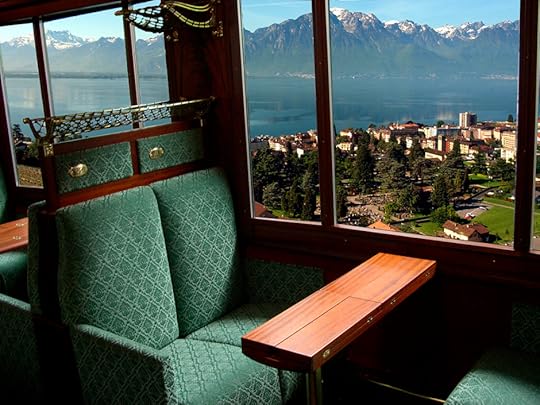
Photo: Train Chartering & Private Rail Cars

Photo: Simon Pielow
Route: Lucerne to Montreux
Highlights: Brünig Pass, flower-covered chalets, the Gruben (Schönried) area
Beta: Departures daily. Reservations recommended. Eurail passes accepted.
The panoramic cars on the Golden Pass train allow for almost 360-degree views. The Golden Pass route gives you a little slice of everything Switzerland — high-alpine mountains, chalet-filled villages, vineyards, lakes, and some of the country’s most historically important cities. For a driver’s-eye view, consider splurging for VIP seats in the very front of the train.
14. Cinque Terre, Italy

Photo: Corniglia

Photo: Luca Volpi

Photo: Bruce Tuten
Route: Levanto to La Spezia
Highlights: The Ligurian Sea, pastel villages, terraced vineyards, seafood
Beta: Multiple departures daily. Eurail passes accepted.
This little section of railway serves the five Italian Riviera villages of the Cinque Terre in dramatic fashion. The trip is only about 40 minutes in one direction, so take the train one way, then spend the day hiking the amazing village-connecting trails back to where you started. 

This post is proudly produced in partnership with our friends at Eurail.

November 25, 2014
14 images that show the stunning terrain and culture of Patagonia’s Northern Fjords
WHAT MOST PEOPLE don’t realize is that Patagonia encompasses more than Subantarctic wilds like the iconic Torres del Paine National Park. People live there. It’s a large — if slightly nebulous — region that straddles the southern ends of Chile and Argentina, and it’s definitely not a country (though it often feels like one).
On the Chilean side of the Andes Mountains that rip the region in two, there is a less-heralded northern section of Patagonia. It’s characterized by a Tolkien-esque landscape of fjords, rumbling volcanoes, puma-stalked forests, and a superstitious fishing community whose only roadway is the sea. Perhaps because of its relative inaccessibility, this part of Patagonia has so far flown under the radar of global attention.
This photo essay is what the northern fjords of Chilean Patagonia look like if you explore it the only way you can: by boat. 

1
Notorious for foul weather and even fouler seas, Chilean Patagonia might not be a place you’d think to visit by yacht. But it holds certain advantages in a landscape dominated by ice-capped volcanoes, sheer granite cliffs, impenetrable 3,000-year-old rainforests, and an acute lack of roads.

2
This is a local fishing family in Reloncaví Sound who carry on centuries-old traditions. Like many other families in the region, their only roadway is the sea. Towering in the background is Mount Yate, a 2,187 meter high active volcano. Minerals that naturally erode from Mount Yate are what give the water its cloudy turquoise appearance.

3
Local marine scientist, Carlos Lonza, at the helm of his 11-metre ketch, Agartha. Carlos sold me on this sailing adventure by hinting at summer adventures under sun and sail, and the chance to visit the most spectacular coast in South America. The only thing he overstated was the sunshine.

4
Carlos dives for crustaceans in Chile's cold, nutrient-rich waters. The Pacific produces an abundance of seafood that characterises cuisine all over the country. Being no wider than 350 km at its broadest point and 4,300 km long, Chile is essentially one big coastline -- so it’s not surprising they take the fifth-largest annual seafood catch of any nation.

5
Machas, a native pink clam of Chile, freshly collected and ready for grilling ‘a la parmesana’ with chilli and coriander (cilantro).

6
A local’s tender 'parked' in a ‘driveway’. Fishermen in this part of Chilean Patagonia have no other access but the sea to their subsistence homes / farms cut into the steep forested edges of glacial mountains and volcanoes.

7
Sea lions in the mist make the eeriest human-like cries. They often rob catch from fishermen and are a protected species. But most locals would never shoot them anyway. They genuinely believe the legend of a ghost ship, el Caleuche, that roams these waters, manned by drowned sailors and captained by a sorcerer who transforms lost fishermen into sea lions. In a community constantly at the mercy of the sea, and where the ability to swim is a rarity, most have lost loved ones to the water.

8
Many times while sailing through Southern Chile I fantasized about buying a home like this one, shrouded in the mists, surrounded by nothing but forest, mountain, and sea. They’re quite affordable, but Carlos warns me that obtaining the paperwork can be a nightmare. The deeds granted to the original colonists who came here are often missing, as are the many descendants’ signatures required to transfer ownership.
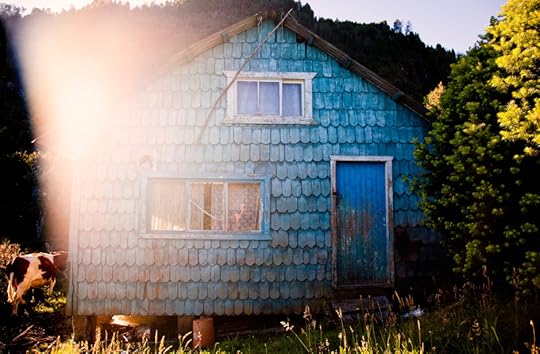
9
A typical settler home on the fjords of Southern Chile. Despite the constant lashings of Patagonian rain and sleet, these wooden shingles rarely succumb to rot. The secret is that they're made from Alerce wood (Patagonian Cypress), an incredibly slow growing, water-resistant native tree species that is the second-oldest growing plant on Earth.

10
Agartha at anchor at Caleta Porcelana. “The beauty of this place is that when the weather turns foul, there is always a fjord or sheltered cove somewhere to lay anchor” says Carlos, whose local knowledge really comes into its own as we explore the twisting depths of Chile’s fjordlands.

11
“There are some happy advantages to living among volcanoes,” Carlos says as we hike into a series of secret pools in the temperate rainforest. The intense colour of the water is due to mineral deposits suspended in the superheated water as it bubbles from a geothermal spring.
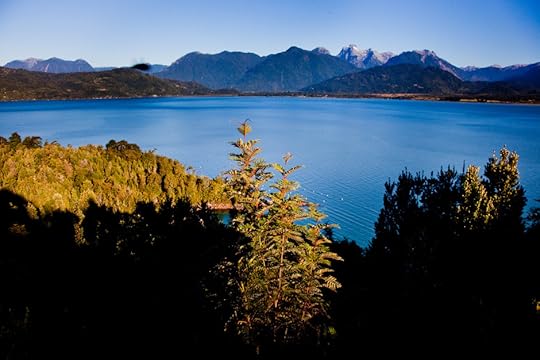
12
The view south-east over Reloncaví Sound. In the distance are the granite hulks of Cochamó Valley. Its immense walls are legendary in rock climbing circles worldwide and have earned it the moniker 'The Yosemite of South America'.

13
The only way to get into Chile's Cochamó Valley is on foot or on horseback. It’s a tough uphill slog, but the view when you arrive is all the more inspiring for the knowledge that no road has ever penetrated the valley, no internal combustion has echoed between these cliffs, and commercial felling has never disturbed its primeval mountain forest ecology.

14
One of the Spanish-speaking world’s greatest poets, Pablo Neruda, once said "Anyone who hasn't been in the Chilean forest does not know this planet." In the Cochamó Valley, wild pumas still stalk pudús (the world’s smallest deer) as rare endemic marsupials scamper through the undergrowth of 3,000-year-old Alerce trees.

Signs you're born, raised in Manila

Photo: Jerald Guillermo
1. You use Facebook to keep up with Manila’s gangs.
There’s the budol-budol gang where they hypnotize or sweet-talk their victims into giving them their valuables.
There’s the dugo-dugo gang who target rich households and trick their maids into giving them money or jewelry under false pretenses that the maid’s boss got into an accident and needs cash immediately.
There’s the ipit taxi gang, where two-to-three men, usually in cahoots with the driver, suddenly board a taxi to rob its passenger.
Women take photos of their taxi’s plate number and driver, and then send it to their friends just in case they become a victim of “taxi sprays,” an unknown chemical substance sprayed by shady taxi drivers into the air-conditioner to immobilize female victims.
In other parts of the world, people use Facebook to look at cat gifs and trending gossip. You use it to stay up to date on how to arrive home with all your cash (unless you spent it at the mall, which is likely). You read up what gangs are where, new tricks and schemes, what parts of the city to avoid tonight. While others call Manila unsafe, you know it just takes a particular brand of street smarts, social media included.
2. Traffic is your go-to excuse for tardiness.
Manileños put up with the notoriously heavy traffic every day — except on holidays and when Manny Pacquiao has a boxing match, which ensures that the whole city will be off the roads.
Traffic is such a huge part of your life that you learn to work it into your schedule. When payday and a monsoon fall on a Friday, you leave the office an hour or two early, work overtime ‘til 9pm, or kill time at the nearest mall (see below) before heading home. You’re still physically and emotionally scarred from that time you held your pee on the EDSA freeway for four straight hours.
Then when you’re vacationing in a first-world country, you shake your head in disbelief when locals complain about their version of heavy traffic — which is nothing compared to Manila’s regular Carmageddon.
3. The mall is your second home.
SM is your second home. You frequent the mall for your dates, weekly grocery, afternoon strolls, family day, or to simply get free air-conditioning while waiting for the power to return after a blackout.
You cross the street like a game of Patintero.
It’s like grown up patintero from our childhoods – a mix of hopscotch and tag. If you didn’t grow up playing that, then you could say it’s like Frogger. Whatever way you describe it, it feels a bit like life and death every time.
4. You have a love-hate relationship with the MMDA.
When you encounter heavy traffic, corrupt policemen, and unresolved road mishaps, you blame the Metropolitan Manila Development Authority. At the same time, you’ve downloaded their app and follow them on Twitter for the latest traffic reports and flood guides. You’ve retweeted some of the MMDA’s humorous posts, but you don’t hesitate to let them know about your grievances.
Your commute is affected whenever they implement experimental rules that try (and fail) to curb traffic. Thanks to their number-coding scheme (better known as color-coding), your car is prohibited from the main roads one day a week. You’ve been pulled over by the cops at least once in your life, thanks to ever-changing road regulations. You look forward to their announcement of lifted rules during holidays and typhoons. At the same time, you know there would be only chaos if the MMDA didn’t exist.
5. You have emergency rain gear everywhere.
In your car, under your office desk, in your motorcycle compartment, and by the front door of your house, and not just during Typhoon Season. You know that heavy rain can happen any time, even in the peak of summer. You have a stash of umbrellas, raincoats, flood boots, and jackets within reach just in case you need to brace another thunderstorm tonight.
6. You know exactly where to go for the cheapest finds.
For designer knock-offs and cellphone repair, it’s Greenhills. For Christmas supplies and just about anything under the sun, it’s Divisoria. For Chinatown goods and market finds, it’s Quiapo. You even have a go-to pirated DVD supplier.
7. You’re tired of security guards “poking” your bag.
Thanks to bomb threats and mall crimes that happen periodically, it’s become standard procedure for security guards to check customers’ bags for explosives and weapons before they allow them to enter any establishment.
But a true Manileño knows that when the line at the mall becomes as congested as EDSA traffic, Mr. Security Guard will simply poke your bag to make it look like he’s doing his job. Worse, you feel discriminated when the lady holding an expensive-looking leather bag was allowed to breeze through, while you have to go through a five-minute inspection of your ratty backpack.
8. Nightlife happens every night.
Why wait for Friday or the weekend to party? There’s always a bustling bar and club from Timog to Malate. Parties in Manila peak at midnight and can go up to the wee hours of the morning. As for spots in Taguig that have a 3am curfew, you simply hop to another bar in the next town.
SO WHAT if it’s a Tuesday night? You can still drag yourself to work or school the next day.
9. You are resilient.
Despite political issues and regular calamities that strike the country, Manileños will always be a resilient, happy bunch. Your friends will upload Facebook photos of chest-deep floods along EDSA during the latest typhoon, but as soon as the rain and floods subside, Manila residents will clean up and be back to work in no time, and many will even find time to help out their less fortunate kababayans (countrymen) whose homes were ravaged.
Whenever there’s a travel advisory put on the Philippines or media reports state Manila is a dangerous place to live, you simply laugh it off because you know better. You tell tourists that all they need is to be street smart to deal with Manila life, and you’ll be more than happy to give them advice — after which you’ll dare them to try their first balut. 

November 23, 2014
8 of the strangest places on Earth
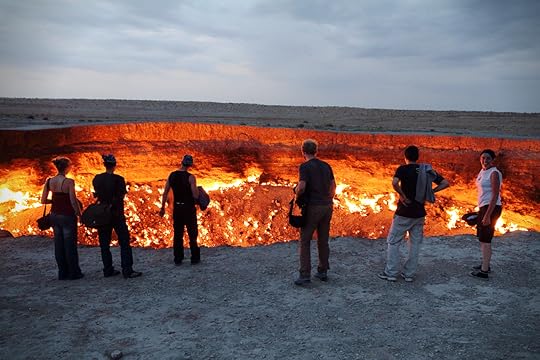
Derweze, the Door to Hell. Photo: NMK Photography
EARTH IS A MIGHTY BIG PLACE, and if you’re willing to strap on some snowshoes or trek through barren deserts there’s a whole lot of strangeness left out there.
1. The Southern Pole of Inaccessibility
Location: Antarctica
Antarctica’s Pole of Inaccessibility — the point farthest from the sea in all directions — is probably the most remote spot on the planet. It’s also the coldest, with an average year-round temperature of -58.2C (-72F).
The exact location is always in dispute, but the best marker lies at 82°06’S 54°58’E, where a creepy plastic bust of Vladimir Lenin sits atop a cabin built by the Soviets in 1958. The cabin is completely buried in ice, but should you manage to dig it up there’s a golden visitor’s book left for intrepid souls to sign their name.
2. Derweze – the Door to Hell
Location: Turkmenistan
While drilling for gas near Derweze in 1971, a team of geologists in Turkmenistan accidentally collapsed an underground natural gas cavern. Rather than have the poisonous gas escape and kill the local semi-nomadic Teke people, the team lit it on fire.
It’s been burning ever since.
3. The Principality of Sealand
Location: English Channel
After WWII, several British gun platforms were abandoned in the English Channel.
In 1967, a pirate radio broadcaster took up residence in one of them and declared the fort an independent nation, and after a run-in with the Royal Navy a court ruled that Sealand was outside British jurisdiction.
It’s been operating more or less as its own country ever since, issuing passports, currency, and tourist visas. There was even an attempted coup that involved helicopters, a shotgun, and several hostages, resulting in a German diplomat being sent to the nation.
Freedom from legal restrictions has made Sealand an attractive base for online casinos and filesharers, so “custodianship” of the principality is currently on sale for the low, low price of 750 million euros.
4. Bouvet Island
Location: South Atlantic Ocean
Technically a part of Norway, the nearest landmass to Bouvet Island is an empty chunk of Antarctica over 1750km (1090 miles) away.
Inhabited only by lichens, penguins, and seals, Bouvet nonetheless has its own internet domain (.bv).
The most remote island in the world has only been visited a handful of times by various research expeditions and explorers attempting to claim it for their homeland, and in 1964 a mysterious boat loaded with supplies was discovered without any trace of its passengers.
Though, in reality, the most interesting thing on the island is probably a ruined weather station. The film Alien vs. Predator is supposed to take place mostly on Bouvet.
5. Bir Tawil
Location: The Egyptian-Sudanese border
Bir Tawil is a barren trapezoid of land between Egypt and Sudan that is so useless neither country will admit they own it. Both states claim its much more attractive sister territory, the Hala’ib Triangle, but due to treaty terms neither state can claim both.
It’s little more than sand, rocks, and a well in the middle, but it has the distinction of being the only unclaimed piece of Earth outside of Antarctica.
6. The Zilov Gap
Location: Central Siberia
The Trans-Siberian railway was completed in 1916, but its builders made sure to avoid the Zilov Gap. It’s a 640km (400 mile) stretch of wilderness so inaccessible that it wasn’t crossed until 2000.
If you’ve seen The Long Way Round, this was the impassable section that forced Ewan McGregor and Charley Boorman to hop the train.
As of 2005 a road through the Gap was under construction, but given the condition of the average Russian highway, my guess is it will still make for an adventure.
7. Mount Thor
Location: Baffin Island, Nunavut, Canada
Although not a particularly tall mountain, Mount Thor is home to the greatest purely vertical drop in the world.
At 1250m (4101ft), the drop is over one and a half times higher than the tallest man-made structure ever built — currently the Burj Dubai.
An American team set the world record for longest rappel in 2006 on Mount Thor; another attempt by a Canadian park ranger ended tragically when his equipment failed and he dropped to his death.
8. Mir Mine
Location: Mirny, Siberia
The Mir diamond mine in Mirny, Eastern Siberia, is one of the biggest man-made holes in the world. At 525m (1720ft) deep and 1200m (3900ft) wide, it’s so huge it can suck in helicopters flying over it due to the downward air flow (the air space above is, therefore, off limits).
Its sister mine, Udachnaya pipe, is equally gigantic, and both can easily be seen on Google Maps. 
This article was originally published on December 8th, 2009

Matador Network's Blog
- Matador Network's profile
- 6 followers



